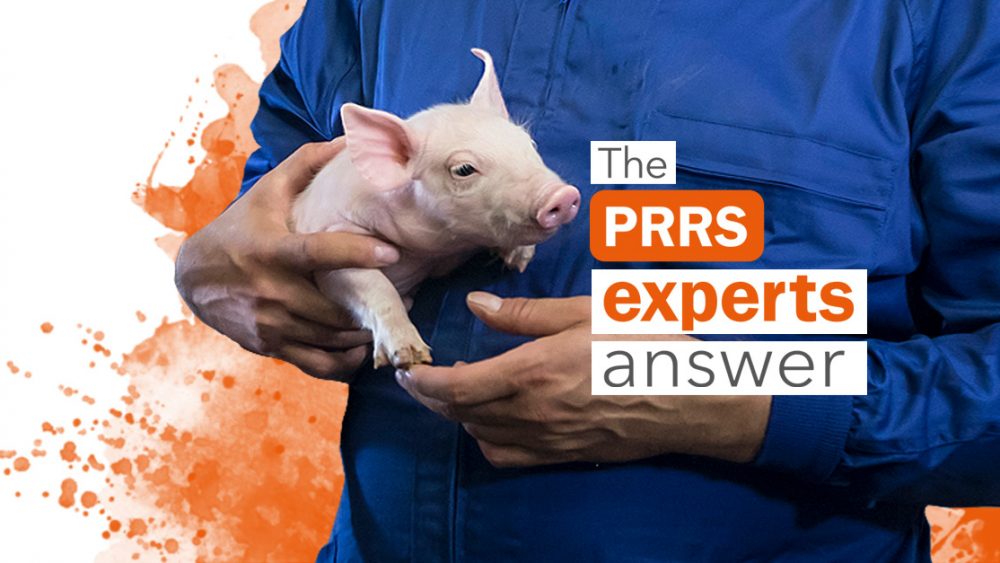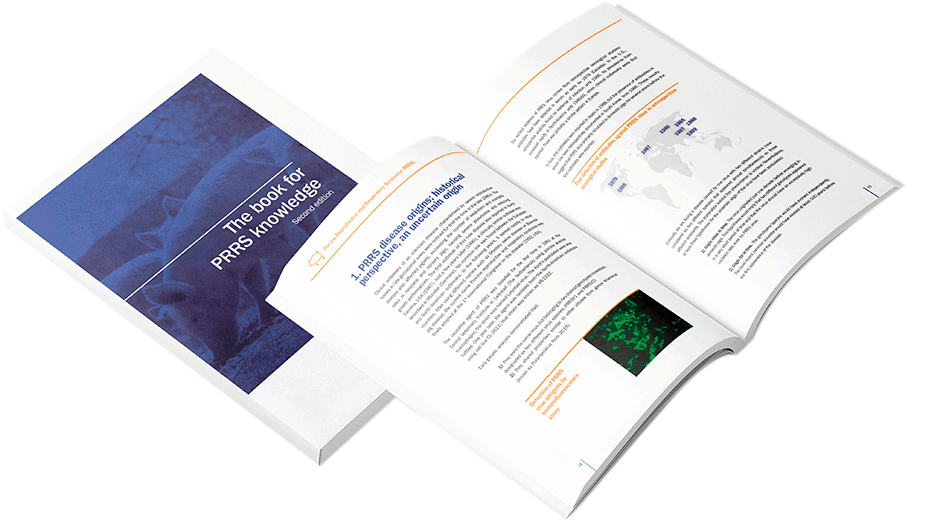What protection percentage do PPRS vaccines provide?
Modified live PRRS vaccines protect in a variable percentage. It is difficult to specify the percentage, as it will vary depending on the similarity (homology) between the wild virus and the vaccine virus.
The more similar they are, the higher the probability of a good protection.
Nevertheless, we must bear in mind that when the viruses are sequenced to know their percentage of homology with respect to the vaccine virus, this percentage will not be directly related to the degree of protection (this is, a farm infected with a virus with an homology of 92% with respect to the vaccine virus will not, necessarily, develop a better protection than another one infected with a different PRRS virus with an homology of 86%).
This is the reason why it is difficult to specify protection percentages.
Must we always isolate the replacement animals?
During the gilt acclimatisation (whether having internal or external replacement animals), it is better to keep all the animals isolated, because during the acclimatisation period, although having vaccinated them, it is interesting to expose them to the farm (wild) virus.
This exposure will make the gilts shed the wild virus for some weeks, and due to this, it is necessary to keep them isolated.
The isolation will avoid that they break the stability on the farm, therefore causing problems.
How much time is needed for ‘cleaning’ a 150-sow farm?
I understand that ‘cleaning’ is used instead of removing the PRRS virus from the farm. The removal of the virus from the farm will depend on the actions carried out. If the nurseries and the fattening units are depopulated, and the replacements are halted for some 7 months, the probabilities of removing the virus from the farm in less than a year are high.
You can ask your own question! Visit Pig333.com and submit your question to the experts.
¿Qué porcentaje de protección brindan las vacunas?
Las vacunas vivas atenuadas de PRRS protegen de modo variable. Es difícil precisar cuál es el porcentaje pues éste variará con la similitud (homología) que tenga el virus salvaje con el de la vacuna.
Cuanto más parecidos mayor probabilidad de protección.
Pero hay que tener en cuenta que, cuando se secuencian los virus para conocer su porcentaje de homología con el virus vacunal, este porcentaje no va a estar directamente relacionado con la protección.
Es decir, una explotación infectada con un virus PRRS homólogo al 92% con un virus vacunal no tiene por qué desarrollar una mejor protección que otra que esté infectada con otro virus PRRS homólogo al 86%. Esta es la razón por la cual es difícil precisar porcentajes de protección.
¿Siempre hay que aislar a la reposición?
Durante el proceso de adaptación de la reposición, bien sea interna o externa, es mejor tener a los animales en aislamiento ya que durante el proceso de adaptación, a pesar de haber vacunado la reposición es interesante exponerlas al virus de la granja (salvaje).
Esta exposición hará que las primerizas excreten el virus salvaje durante unas semanas y es por este motivo que se requiere que estén aisladas.
El aislamiento evitará que puedan romper la estabilidad de la granja ocasionando problemas.
¿Cuánto tiempo mínimo se necesita para “limpiar” una granja de 150 marranas?
Entiendo que “limpiar” se usa en lugar de eliminar el virus PRRS de la granja.
La eliminación del virus de una explotación dependerá de qué acciones se lleven a cabo. Si se despueblan transiciones y cebo y se suspende la reposición por un período de unos 7 meses, las probabilidades de eliminar el virus de la explotación en menos de un año son elevadas.
Puedes formular tu propia pregunta! Visita 3tres3.com e introduce allí tu pregunta a los expertos.

Marcovetgrup S.L. – Spain




